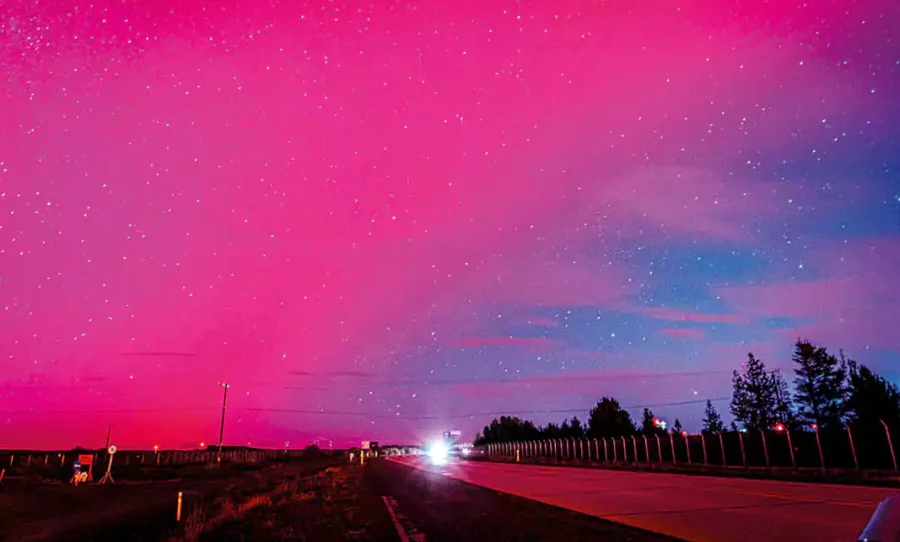Auroras lit up skies across swaths of the planet for the second night in a row on Saturday, after already dazzling Earthlings from the United States to Tasmania to the Bahamas the day before.
A powerful solar storm — which could continued on Sunday — has triggered spectacular celestial shows usually confined to the far northern reaches of the planet, hence their nickname of the “northern lights”.
“I have the sensation of living through a historic night in France […] It was really charged, with solar particles and emotions,” Eric Lagadec, an astrophysicist at the Observatoire de Cote d’Azur, wrote on social media after the first night.
Late on Saturday evening, pictures again started trickling onto social media as people in the United States reported sightings, though not as strong as Friday night’s.
The first of several coronal mass ejections (CMEs) — expulsions of plasma and magnetic fields from the Sun — came just after 4pm GMT on Friday, according to the US-based National Oceanic and Atmospheric Administration (NOAA)’s Space Weather Prediction Center (SWPC).
It was later upgraded to an “extreme” geomagnetic storm — the first since the “Halloween Storms” of October 2003 that caused blackouts in Sweden and damaged power infrastructure in South Africa. Friday’s storm was listed as hitting level five geomagnetic conditions — the highest on the scale. Saturday saw G3 to G5 conditions, with G4 or higher conditions predicted Sunday and G3 conditions possible into Monday.
But no major disruptions to power or communications networks appear to have been reported this time around, despite initial worries from authorities.
There have only been “preliminary reports of power grid irregularities, degradation to high-frequency communications, GPS and possibly satellite navigation,” the SWPC said. Elon Musk, whose Starlink satellite internet operator has some 5,000 satellites in low Earth orbit, said his satellites were “under a lot of pressure, but holding up so far”.—AFP







